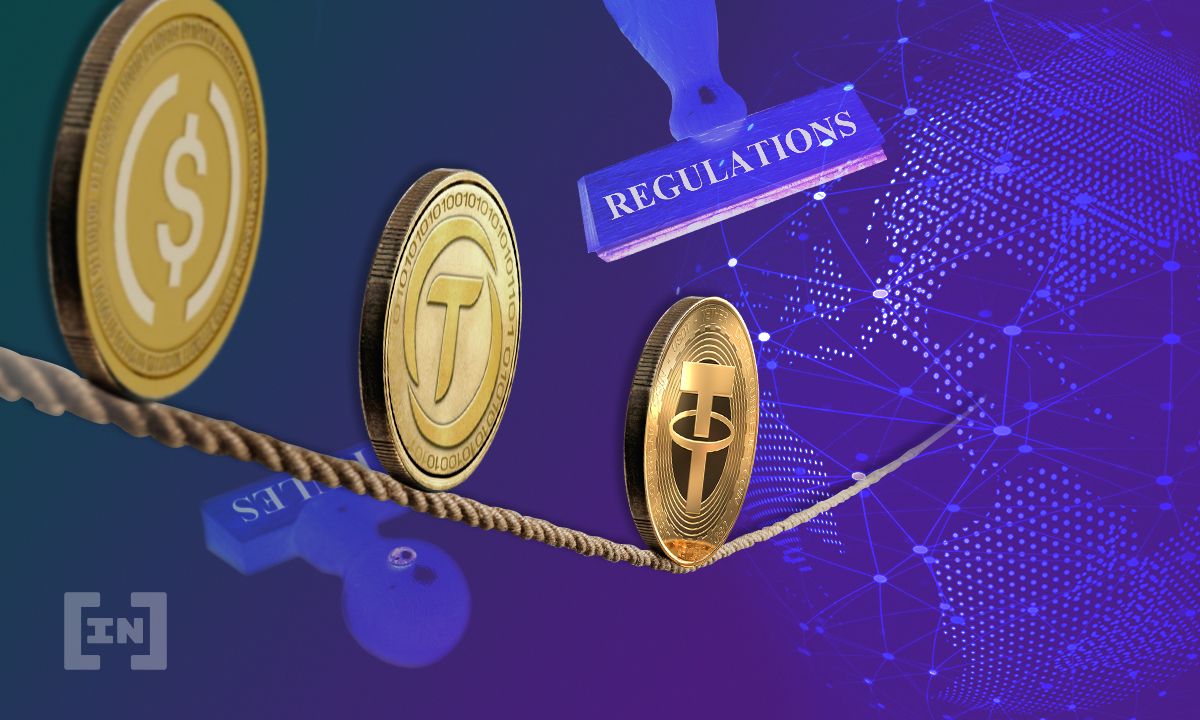Regulating Stablecoins: Challenges and Opportunities

- Understanding Stablecoins and their role in the digital economy
- The need for regulatory oversight in the stablecoin market
- Challenges in regulating stablecoins: A deep dive into the complexities
- Opportunities for innovation and growth in the stablecoin sector
- Global perspectives on stablecoin regulation: A comparative analysis
- Collaborative approaches to regulating stablecoins: Building a framework for success
Understanding Stablecoins and their role in the digital economy
Stablecoins play a crucial role in the digital economy by providing a reliable and stable means of exchange for users. These digital assets are designed to maintain a steady value by pegging them to a reserve asset, such as a fiat currency or a commodity like gold. This stability makes stablecoins an attractive option for users looking to mitigate the volatility often associated with other cryptocurrencies like Bitcoin or Ethereum.
One of the key advantages of stablecoins is their ability to facilitate seamless transactions across borders. By eliminating the need for traditional banking intermediaries, stablecoins enable users to transfer funds quickly and cost-effectively. This has significant implications for financial inclusion, as stablecoins can provide unbanked populations with access to digital financial services.
Moreover, stablecoins can also serve as a store of value, allowing users to preserve their wealth in times of economic uncertainty. This feature makes stablecoins an appealing option for investors looking to diversify their portfolios and hedge against market volatility. Additionally, stablecoins can be used for a wide range of applications, including remittances, e-commerce, and decentralized finance (DeFi) protocols.
Overall, stablecoins have the potential to revolutionize the way we transact and store value in the digital economy. However, their growing popularity has raised concerns among regulators regarding issues such as consumer protection, financial stability, and money laundering. As such, it is crucial for policymakers to strike a balance between fostering innovation and ensuring the safety and soundness of the financial system. By implementing clear and transparent regulatory frameworks, regulators can help unlock the full potential of stablecoins while mitigating potential risks.
The need for regulatory oversight in the stablecoin market
Regulatory oversight in the stablecoin market is crucial to ensure stability and protect consumers. As stablecoins gain popularity and usage increases, the need for clear guidelines and regulations becomes more apparent. Without proper oversight, there is a risk of instability and potential harm to the financial system.
Regulators play a vital role in monitoring the activities of stablecoin issuers and ensuring compliance with existing laws. By establishing regulatory frameworks, authorities can address concerns such as investor protection, anti-money laundering, and financial stability. This oversight helps to mitigate risks and build trust in the stablecoin market.
Furthermore, regulatory oversight can help prevent market manipulation and fraud, which are significant risks in the cryptocurrency space. By setting standards for transparency and accountability, regulators can deter bad actors and promote a more secure environment for stablecoin transactions.
Overall, regulatory oversight is essential for the long-term success and sustainability of the stablecoin market. By working together with industry participants, regulators can create a balanced regulatory environment that fosters innovation while safeguarding against potential risks. It is crucial for regulators to stay informed about market developments and adapt regulations as needed to address emerging challenges in the stablecoin ecosystem.
Challenges in regulating stablecoins: A deep dive into the complexities
Regulating stablecoins presents a myriad of challenges due to their unique characteristics and the global nature of the digital asset market. One of the main complexities is determining which regulatory body has jurisdiction over stablecoins, as they often operate across borders and fall outside traditional regulatory frameworks. This lack of clarity can lead to regulatory arbitrage and create opportunities for illicit activities.
Another challenge is the need to strike a balance between innovation and consumer protection. Stablecoins have the potential to revolutionize the way we transact and store value, but they also pose risks to financial stability and consumer privacy. Regulators must find a way to foster innovation while ensuring that stablecoins are safe and transparent for users.
Additionally, the decentralized nature of many stablecoins makes it difficult to hold any single entity accountable for compliance. This lack of a central authority can hinder regulators’ ability to enforce rules and prevent abuse. Moreover, the rapid pace of technological advancements in the digital asset space means that regulations must be flexible and adaptable to keep up with changing market dynamics.
Opportunities for innovation and growth in the stablecoin sector
There are numerous opportunities for innovation and growth within the stablecoin sector. As the demand for digital assets continues to rise, stablecoins have the potential to play a significant role in the future of finance. Here are some key areas where innovation and growth can be fostered:
- Interoperability: Developing stablecoins that can seamlessly interact with different blockchain networks can enhance their utility and adoption.
- Smart contract integration: Incorporating smart contracts into stablecoin protocols can enable automated transactions and programmable features.
- Privacy and security: Enhancing the privacy and security features of stablecoins can attract more users concerned about data protection.
- Regulatory compliance: Working closely with regulators to ensure stablecoins adhere to existing financial regulations can help build trust and legitimacy.
- Scalability: Improving the scalability of stablecoin networks can support increased transaction volumes and user activity.
By focusing on these areas of innovation and growth, the stablecoin sector can continue to evolve and meet the changing needs of the digital economy. Collaboration between industry stakeholders, regulators, and technology experts will be essential in driving progress and unlocking the full potential of stablecoins.
Global perspectives on stablecoin regulation: A comparative analysis
When it comes to stablecoin regulation, different countries around the world have taken varying approaches. A comparative analysis of global perspectives on this issue reveals a wide range of regulatory frameworks in place. Some countries have embraced stablecoins as a means of fostering financial innovation, while others have expressed concerns about the potential risks they pose to financial stability and consumer protection.
In the United States, for example, stablecoins are subject to regulation by multiple agencies, including the Securities and Exchange Commission (SEC) and the Commodity Futures Trading Commission (CFTC). These agencies have taken a proactive approach to regulating stablecoins, with a focus on ensuring transparency and investor protection. In contrast, countries like China have taken a more restrictive stance, banning the issuance and trading of stablecoins altogether.
On the other hand, countries like Switzerland and Singapore have emerged as global hubs for stablecoin innovation, with regulatory frameworks that are designed to foster growth and innovation in the sector. These countries have implemented clear guidelines for stablecoin issuers and have established regulatory sandboxes to encourage experimentation and development in the space.
Overall, the regulatory landscape for stablecoins is complex and rapidly evolving. As stablecoins continue to gain popularity and adoption, regulators around the world are faced with the challenge of striking a balance between fostering innovation and protecting consumers and financial stability. By taking a comparative approach to stablecoin regulation, countries can learn from each other’s experiences and develop more effective regulatory frameworks that address the unique challenges posed by this emerging technology.
Collaborative approaches to regulating stablecoins: Building a framework for success
When it comes to regulating stablecoins, a collaborative approach is essential for success. By bringing together regulators, policymakers, and industry stakeholders, a framework can be developed that addresses the unique challenges posed by these digital assets. This collaborative effort allows for a more comprehensive understanding of the risks and benefits associated with stablecoins, leading to more effective regulation.
One key aspect of a collaborative approach is the sharing of information and expertise. By pooling resources and knowledge, regulators can gain a deeper insight into the workings of stablecoins and the potential impact they may have on the financial system. This shared understanding can help to inform the development of regulations that are both effective and proportionate.
Another important element of a collaborative approach is the establishment of clear communication channels between regulators and industry participants. By fostering open and transparent dialogue, regulators can stay informed about developments in the stablecoin space and address any emerging risks in a timely manner. This proactive approach can help to prevent potential issues before they escalate.
Overall, a collaborative approach to regulating stablecoins is essential for building a framework that is both robust and flexible enough to adapt to the rapidly evolving digital asset landscape. By working together, regulators can ensure that stablecoins can continue to innovate and provide value to users while minimizing the risks to the financial system. This collaborative effort is key to creating a regulatory environment that fosters innovation and protects consumers.



